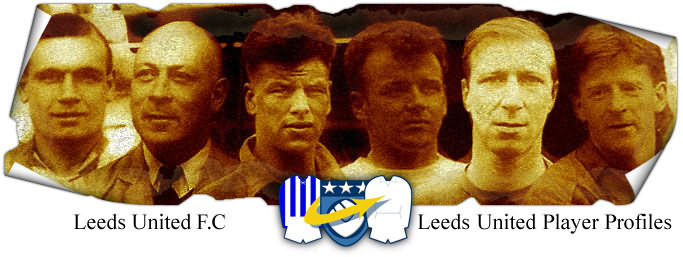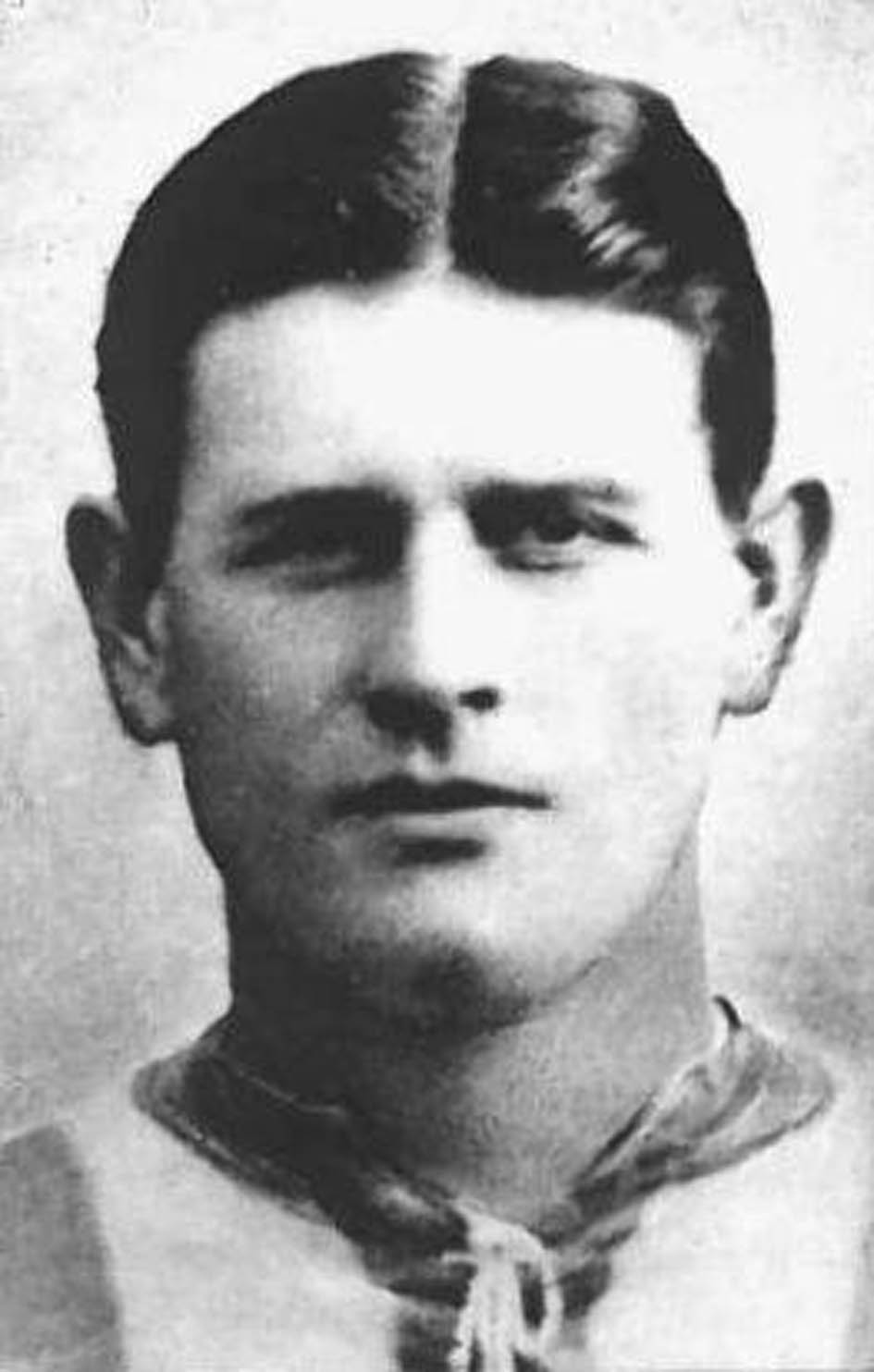

Swan: John (Jack)
1921-1925
(Player Details)
Centre Forward
Born: Seaham Harbour, Co Durham: 10-07-1892
Debut v Hull City (a): 19-11-1921
5’10” 11st 7lb (1922)
The Durham born forward began with Seaham Harbour before joining Huddersfield Town
in October 1919 and played in Town’s 1920 FA Cup Final side that lost 1-0 to Aston Villa
after extra time, a competition in which he scored three times in six games. However, he
did score nineteen goals in thirty two League appearances as Town finished runners-up to
Tottenham Hotspur. He followed this with eight goals in twenty-six games as Town came
seventeenth in their first season in the top flight. In the 1921-22 season he lost his
place to England International Clem Stephenson, who had guested for Leeds City in World
War One, and Swan had scored three goals in nine League games before he joined Leeds
United in November 1921. He had scored thirty goals in sixty-seven League games and three
goals in seven F.A. Cup ties while at Leeds Road. He was an experienced player when he came
to Elland Road and he soon applied it to full effect as his goals helped his new club to
push for promotion. He missed just two games after arriving at Leeds and netted ten goals
in twenty-two games in the League and scored in his only F.A. Cup game as Leeds finished
in eighth place just seven points away from promotion. He had scored twice in three games
at the start of the 1922-23 season when he was given a ban by the club for absenting
himself from the home game with Southampton on 4th September 1922. He missed three games
before returning, but the Leeds forwards went through a spell of seven games where they
failed to score in five. This saw the purchase of Percy Whipp and later Joe Richmond but
it was a long while before Swan and his fellow forwards combined well as he finished with
eight goals in twenty-three League games and two in two F.A. Cup-ties, as Leeds finished
seventh just four points away from promotion. When the 1923-24 campaign kicked off, United
had Durham centre-forward, Joe Richmond, in action and he, Whipp and Swan spearheaded the
promotion charge which took United into the top division for the first time. Swan top-scored
with eighteen goals in thirty-six League appearances as the trio scored forty-four goals
between them and United finished as champions. He continued his good form in the first season
in the top flight, being ever-present in the first twenty-four games, but, although he again
topped the Leeds scorers with eleven goals in twenty-seven games the purchase of the young
Tom Jennings, Russell Wainscott and Willis Edwards put the writing on the wall for himself
and Joe Richmond, as Leeds struggled to survive in the top flight. Swan was still noted for
his thunderbolt shooting with his left foot, but there was no place for him in the Whipp,
Jennings, Wainscoat strike force at the start of the 1925-26 season and he moved to Third
Division South side, Watford, for £1,000 in September 1925. He made his debut for the Hornets
in a 3-1 home win over Norwich City on 9th September 1925 and went on to score twenty-one
goals in thirty-six League games in the 1925-26 season as Watford finished fifteenth. He had
scored six goals in eighteen League appearances in the 1926-27 season, when he again hit
disciplinary problems and he played his final game for the club in a 2-2 home draw with
Swindon Town on 8th January 1927 after being issued with a sine die ban. He moved to another
Third Division South team, Queens Park Rangers, for £300 in February 1927, after having
scored twenty-seven goals, including one from the penalty spot, in fifty four League
appearances and netted another four in five F.A. Cup-ties. He was not so prolific at Loftus
Road, with one goal in fourteen League games in 1926-27 and four in fourteen League games in
1927-28 before leaving on a free transfer to newly founded Thames Association in July 1928,
who played in the Southern League, Eastern Section. He remained with them until he joined
Southern League, Western Section side Lovells Athletic, in October 1929. In 1986 he was
living in Hendon and at that time it was believed that no one still alive had played in an
earlier FA Cup Final than he had. He was invited to see the Centenary Cup Final at Wembley
as a VIP guest as the longest surviving Cup Final player, having played for Huddersfield
Town in 1920. Unfortunately, he later died in Hendon in January 1990.